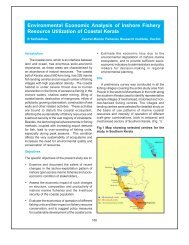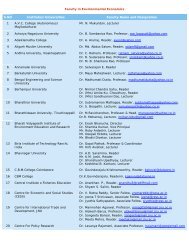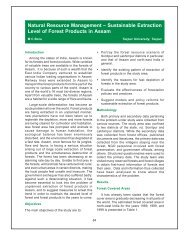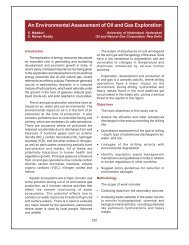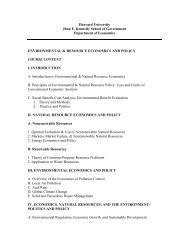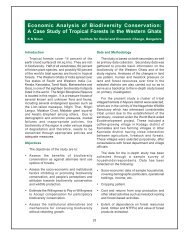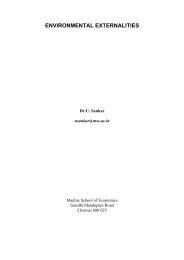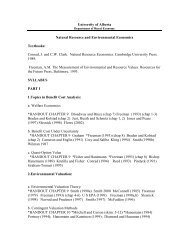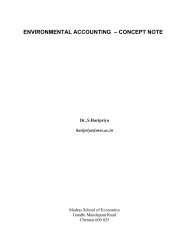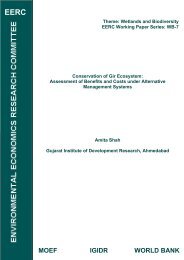PDF 3.08 MB
PDF 3.08 MB
PDF 3.08 MB
Create successful ePaper yourself
Turn your PDF publications into a flip-book with our unique Google optimized e-Paper software.
ecological knowledge may develop to control the exploitation of resources (Berkes,<br />
1989). Such institutions, however, may be dysfunctional (Arnott &<br />
Stiglitz,1991).Further, their lack of legitimacy may reduce their effectiveness<br />
(MacKean, in McKay & Jones,1997). In that case State support is necessary to<br />
create an effective resource management system (Berkes,1989). It is in this context<br />
that the concept of co-management has emerged.<br />
Ostrom (1991) has argued that mere presence of collective interests may not suffice<br />
to induce co-operation. Self-interested persons will try to free ride on the<br />
environmental concerns of others and this will prevent the emergence of institutions<br />
which achieve the collective goals. Nevertheless “… the analytically uncomfortable<br />
fact … remains : from the most primitive to the most advanced societies, a higher<br />
degree of co-operation takes place then can be explained as a merely pragmatic<br />
strategy for egoistic man” (Dawes & Thaler, 1988). This has led scholars from<br />
various disciplines – economics, geographers, anthropologist, sociologists – to<br />
analyze how these institutions are created and how they evolve under the changing<br />
socio-economic conditions.<br />
Such studies of common property resources have typically examined the functioning<br />
of CPR systems from within. They consider CPR systems as a closed system<br />
functioning in an insulated environment. But there are different forces that are at<br />
work in influencing the evolution of CPR regimes. It is being increasingly recognized<br />
that a significant proportion of these forces is exogenous to the community.<br />
Examples of such forces are urbanization, commercialization, etc. The influence of<br />
these forces are, however, traditionally over-looked. For instance, the forces of<br />
commercialization are either ignored – as in the works of Ostrom – or treated as<br />
destabilizing forces – as in Goodland et al (Berkes, 1989). However, CPRs often<br />
composed of marketable commodities. As their market expands, increasing demand<br />
for these products will create incentives to increase the rate of exploitation. The<br />
response of the community in such situations forms an interesting study.<br />
Our project, therefore, sought to examine the evolution of CPR systems as a<br />
response to endogenous as well as external forces. This enables us to identify<br />
potential areas where government intervention is required to support community-<br />
based systems.<br />
13



